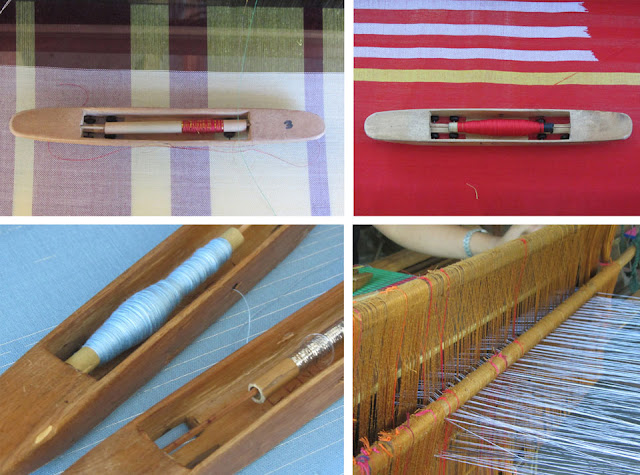Tuna Talk at Marinatuna, Davao
In the 1970’s, Japanese traders were looking for sashimi-grade yellowfin tuna and found that this fish is abundant in General Santos.
Because of the high price commanded by such variety in the Japanese market, some individuals in this city of Mindanao were encouraged to venture into tuna fishing.
One of these fishermen is Domingo Ang, now chief executive officer of Marinatuna Corporation and based in Davao City.
Ang and his crew shipped yellowfin tuna from General Santos to Japan in 1979. This triggered the boom of the Philippine tuna industry wherein 5,000 units of tuna handline boats were built and manned by 50,000 sustenance fishermen.
The tuna industry attracted the Taiwanese as well. In 1994, Ang initiated the monumental trans-shipment of tuna in the Davao Fish Port Complex by about 300 units of Taiwanese fishing boats that ply the Western Pacific sea.
TOURISM
With the Philippines ranking fourth in the world, after China, Japan and Indonesia in the production of tuna and tuna-like species, Ang realized there is also a tourism potential for such.
This gave birth to Marinatuna Restaurant, located at Km. 8 Bo. Pampanga, Sasa, Davao City.
Its main attraction is the 10-way tuna.
“What better way to experience Davao but to eat the famous fish that’s being loaded on its port,” Ang told The News Today.
Marinatuna’s famous 10-way tuna consists of: Grilled Tuna Belly, Crispy Tuna Tail, Sizzling Tuna “Bagaybay”, Sizzling Tuna Tendon, Sizzling Tuna “Bihod”, Tuna Sashimi, Grilled Tuna Jaw (‘panga’ originated from Davao), Tuna Eye Soup, Tuna Kare-kare and Tuna Kinilaw.
“Eating all these tuna is good. It’s loaded with Omega-3, the good cholesterol so it’s good for your heart and brain,” said Ang, who looks younger than his 56 years, proof of how his product works.
But it’s not all-tuna for Marinatuna. They also serve bamboo and tiger lobster, crabmeat and swordfish, among others.
Apart from its health benefits, ordering a meal at Marinatuna enables the restaurant to sustain its Lugaw Kitchen Feeding Project.
DECLINE
But, the tuna industry is without its challenges. Ang revealed that there is a decline in the supply of tuna mainly because of overfishing especially by fishers who illegally encroach in municipal waters, the use of cyanide and dynamite fishing which destroy the marine environment of the fish, water pollution and the degradation of coastal ecosystems like the mangrove forests and corals caused by development activities like fishpond and resort constructions.
Now, there is a moratorium on tuna fishing in the Pacific.
Hopefully, this break from overfishing would give time for the Philippine tuna supply to recover. With the recovery, Marinatuna and other players will continue to provide a healthy alternative to diners as well as income for those who are directly and indirectly involved in the industry.* (Marie Katherine Villalon, The News Today, Oct. 14, 2011)
Because of the high price commanded by such variety in the Japanese market, some individuals in this city of Mindanao were encouraged to venture into tuna fishing.
One of these fishermen is Domingo Ang, now chief executive officer of Marinatuna Corporation and based in Davao City.
Ang and his crew shipped yellowfin tuna from General Santos to Japan in 1979. This triggered the boom of the Philippine tuna industry wherein 5,000 units of tuna handline boats were built and manned by 50,000 sustenance fishermen.
The tuna industry attracted the Taiwanese as well. In 1994, Ang initiated the monumental trans-shipment of tuna in the Davao Fish Port Complex by about 300 units of Taiwanese fishing boats that ply the Western Pacific sea.
TOURISM
With the Philippines ranking fourth in the world, after China, Japan and Indonesia in the production of tuna and tuna-like species, Ang realized there is also a tourism potential for such.
This gave birth to Marinatuna Restaurant, located at Km. 8 Bo. Pampanga, Sasa, Davao City.
Its main attraction is the 10-way tuna.
“What better way to experience Davao but to eat the famous fish that’s being loaded on its port,” Ang told The News Today.
Marinatuna’s famous 10-way tuna consists of: Grilled Tuna Belly, Crispy Tuna Tail, Sizzling Tuna “Bagaybay”, Sizzling Tuna Tendon, Sizzling Tuna “Bihod”, Tuna Sashimi, Grilled Tuna Jaw (‘panga’ originated from Davao), Tuna Eye Soup, Tuna Kare-kare and Tuna Kinilaw.
“Eating all these tuna is good. It’s loaded with Omega-3, the good cholesterol so it’s good for your heart and brain,” said Ang, who looks younger than his 56 years, proof of how his product works.
But it’s not all-tuna for Marinatuna. They also serve bamboo and tiger lobster, crabmeat and swordfish, among others.
Apart from its health benefits, ordering a meal at Marinatuna enables the restaurant to sustain its Lugaw Kitchen Feeding Project.
DECLINE
But, the tuna industry is without its challenges. Ang revealed that there is a decline in the supply of tuna mainly because of overfishing especially by fishers who illegally encroach in municipal waters, the use of cyanide and dynamite fishing which destroy the marine environment of the fish, water pollution and the degradation of coastal ecosystems like the mangrove forests and corals caused by development activities like fishpond and resort constructions.
Now, there is a moratorium on tuna fishing in the Pacific.
Hopefully, this break from overfishing would give time for the Philippine tuna supply to recover. With the recovery, Marinatuna and other players will continue to provide a healthy alternative to diners as well as income for those who are directly and indirectly involved in the industry.* (Marie Katherine Villalon, The News Today, Oct. 14, 2011)
 |
| Tuna Kinilaw. Sizzling Tuna 'Bihod'.Sizzling Tuna. Tuna Eye Soup |




